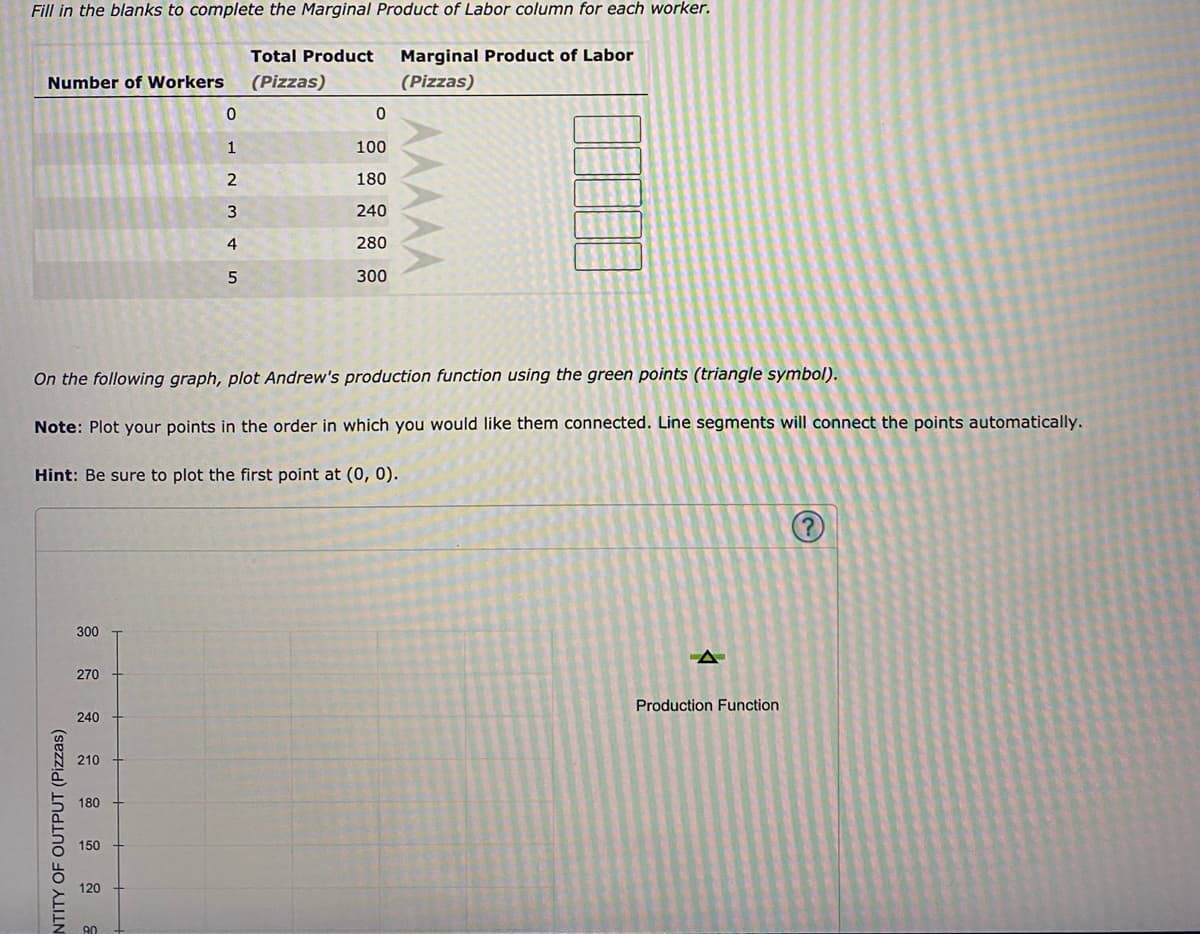Fill in the blanks tó čomplètě thế Marginal Product of Labor colu for eac Total Product Marginal Product of Labor Number of Workers (Pizzas) (Pizzas) 100 180 3 240 4 280 300 AMAAA
Fill in the blanks tó čomplètě thế Marginal Product of Labor colu for eac Total Product Marginal Product of Labor Number of Workers (Pizzas) (Pizzas) 100 180 3 240 4 280 300 AMAAA
Chapter7: Proudction Costs
Section: Chapter Questions
Problem 10SQ
Related questions
Question

Transcribed Image Text:Fill in the blanks to complete the Marginal Product of Labor column for each worker.
Total Product
Marginal Product of Labor
Number of Workers
(Pizzas)
(Pizzas)
1
100
2
180
240
4
280
300
On the following graph, plot Andrew's production function using the green points (triangle symbol).
Note: Plot your points in the order in which you would like them connected. Line segments will connect the points automatically.
Hint: Be sure to plot the first point at (0, 0).
300
270
Production Function
240
210
180
150
120
90
NTITY OF OUTPUT (Pizzas)

Transcribed Image Text:2. The law of diminishing marginal returns
Andrew's Performance Pizza is a small restaurant in Philadelphia that sells gluten-free pizzas. Andrew's very tiny kitchen has barely enough room for
the four ovens in which his workers bake the pizzas. Andrew signed a lease obligating him to pay the rent for the four ovens for the next year.
Because of this, and because Andrew's kitchen cannot fit more than four ovens, Andrew cannot change the number of ovens he uses in his production
of pizzas in the short run.
However, Andrew's decision regarding how many workers to use can vary from week to week because his workers tend to be students. Each Monday,
Andrew lets them know how many workers he needs for each day of the week. In the short run, these workers are
resources, and the
ovens are
resources.
fixed
Andrew's daily production schedule is presented in the following table.
variable
Expert Solution
This question has been solved!
Explore an expertly crafted, step-by-step solution for a thorough understanding of key concepts.
This is a popular solution!
Trending now
This is a popular solution!
Step by step
Solved in 3 steps with 2 images

Recommended textbooks for you








Exploring Economics
Economics
ISBN:
9781544336329
Author:
Robert L. Sexton
Publisher:
SAGE Publications, Inc
